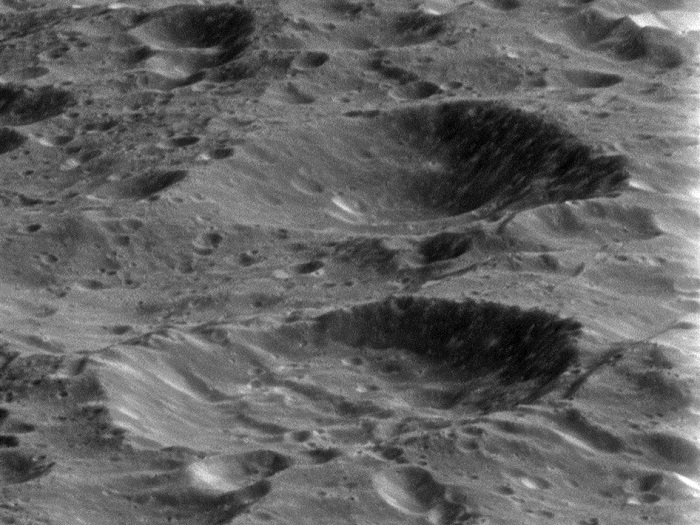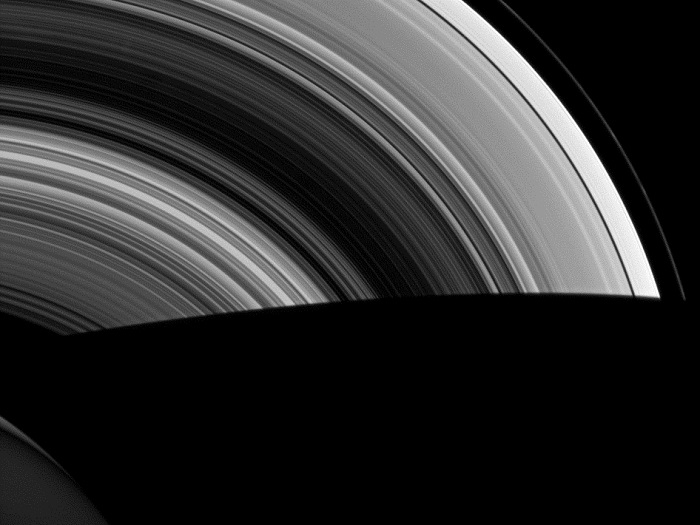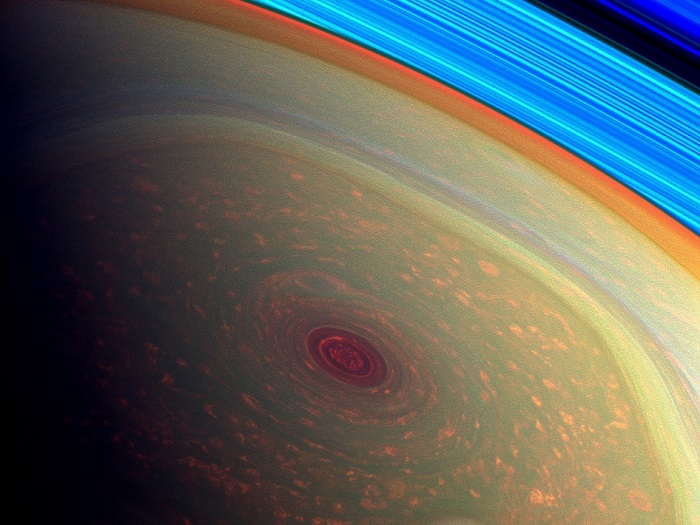.

Goodbye to Rhea
On its fourth and final targeted flyby of Rhea, the Cassini spacecraft provided this stunning view of the ancient and heavily cratered surface. Billions of years of impacts have sculpted Rhea's surface into the form we see today.
With a diameter of 949 miles (1,528 kilometers) Rhea is Saturn's second-largest moon.
This view is centered on terrain at 33 degrees north latitude, 358 degrees west longitude. The image was taken in visible light with the Cassini spacecraft narrow-angle camera on March 9, 2013.
The view was acquired at a distance of approximately 2,280 miles (3,670 kilometers) from Rhea and at a Sun-Rhea-spacecraft, or phase, angle of 92 degrees. Image scale is 72 feet (22 meters) per pixel.
The Cassini-Huygens mission is a cooperative project of NASA, the European Space Agency and the Italian Space Agency. The Jet Propulsion Laboratory, a division of the California Institute of Technology in Pasadena, manages the mission for NASA's Science Mission Directorate, Washington, D.C. The Cassini orbiter and its two onboard cameras were designed, developed and assembled at JPL. The imaging operations center is based at the Space Science Institute in Boulder, Colo.
.

Long Day's Journey into Night
Saturn's shadow cuts sharply across its rings as the orbits of ring particles carry them suddenly from day to night. With no atmosphere to scatter light, shadows in space are much darker than we're used to here on Earth.
This view looks toward the unilluminated side of the rings from about 47 degrees below the ringplane. The image was taken in visible light with the Cassini spacecraft wide-angle camera on March 5, 2013.
The view was obtained at a distance of approximately 891,000 miles (1.434 million kilometers) from Saturn and at a Sun-Saturn-spacecraft, or phase, angle of 85 degrees. Image scale is 51 miles (82 kilometers) per pixel.
The Cassini-Huygens mission is a cooperative project of NASA, the European Space Agency and the Italian Space Agency. The Jet Propulsion Laboratory, a division of the California Institute of Technology in Pasadena, manages the mission for NASA's Science Mission Directorate, Washington, D.C. The Cassini orbiter and its two onboard cameras were designed, developed and assembled at JPL. The imaging operations center is based at the Space Science Institute in Boulder, Colo.
.

Summer is Coming!
Summer is slowly coming to Saturn's northern hemisphere. The north pole, which was in the midst of a seven-year-long winter when Cassini arrived in 2004, is now seen basking in the sunlight of mid-spring. Cassini is taking full advantage of the sunlight to capture these amazing views of the north polar hexagon and myriad storms, large and small, that comprise the weather systems in the polar region.
This view is centered on terrain at 75 degrees north latitude, 322 degrees west longitude. The image was taken with the Cassini spacecraft wide-angle camera on Feb. 26, 2013 using a spectral filter sensitive to wavelengths of near-infrared light centered at 752 nanometers.
The view was acquired at a distance of approximately 383,000 miles (616,000 kilometers) from Saturn and at a Sun-Saturn-spacecraft, or phase, angle of 48 degrees. Image scale is 21 miles (33 kilometers) per pixel.
The Cassini-Huygens mission is a cooperative project of NASA, the European Space Agency and the Italian Space Agency. The Jet Propulsion Laboratory, a division of the California Institute of Technology in Pasadena, manages the mission for NASA's Science Mission Directorate, Washington, D.C. The Cassini orbiter and its two onboard cameras were designed, developed and assembled at JPL. The imaging operations center is based at the Space Science Institute in Boulder, Colo.
.

Enter the Vortex ... in Psychedelic Color
This spectacular, vertigo inducing, false-color image from NASA's Cassini mission highlights the storms at Saturn's north pole. The angry eye of a hurricane-like storm appears dark red while the fast-moving hexagonal jet stream framing it is a yellowish green. Low-lying clouds circling inside the hexagonal feature appear as muted orange color. A second, smaller vortex pops out in teal at the lower right of the image. The rings of Saturn appear in vivid blue at the top right.
The images were taken with Cassini's wide-angle camera using a combination of spectral filters sensitive to wavelengths of near-infrared light. The images filtered at 890 nanometers are projected as blue. The images filtered at 728 nanometers are projected as green, and images filtered at 752 nanometers are projected as red. At Saturn, this scheme means colors correlate to different altitudes in the planet's polar atmosphere: red indicates deep, while green shows clouds that are higher in altitude. High clouds are typically associated with locations of intense upwelling in a storm. These images help scientists learn the distribution and frequencies of such storms. The rings are bright blue in this color scheme because there is no methane gas between the ring particles and the camera.
The view was acquired at a distance of approximately 261,000 miles (419,000 kilometers) from Saturn and at a sun-Saturn-spacecraft, or phase, angle of 94 degrees. Image scale is 13 miles (22 kilometers) per pixel.
The Cassini-Huygens mission is a cooperative project of NASA, the European Space Agency and the Italian Space Agency. The Jet Propulsion Laboratory, a division of the California Institute of Technology in Pasadena, manages the mission for NASA's Science Mission Directorate, Washington, D.C. The Cassini orbiter and its two onboard cameras were designed, developed and assembled at JPL. The imaging operations center is based at the Space Science Institute in Boulder, Colo.
.
Quelle: NASA
